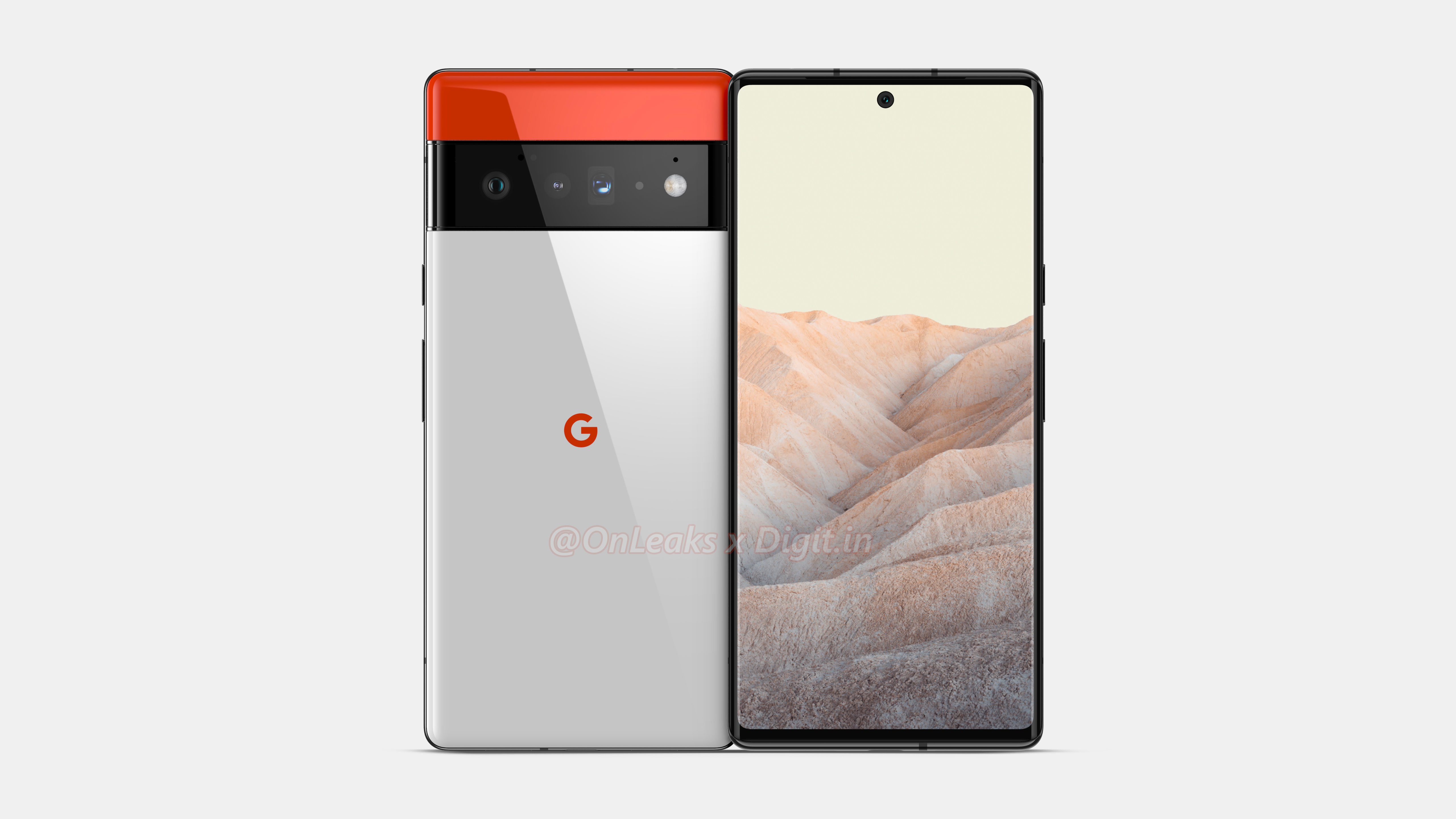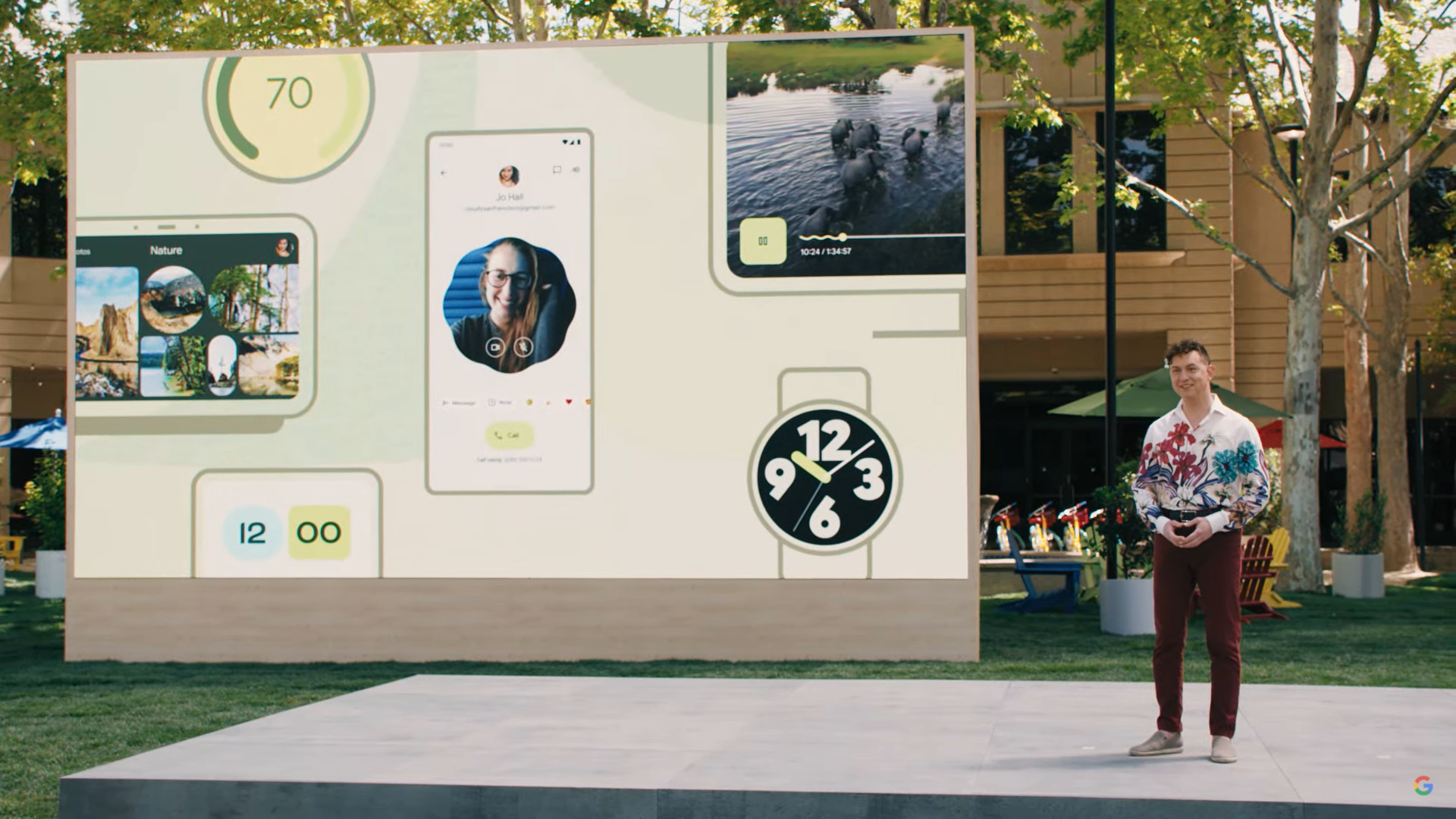Since we learned that Google and Samsung were co-developing a new chipset for the Google Pixel 6 meant to run Android 12 more efficiently than a Snapdragon, I've been excited by the prospect of a 'stock' Android phone with properly powerful specs.
Then Google announced the new Material You UI with customizable color options across all apps – and said it was exclusive to Pixels, only elevating my premature hype levels.
My hype was tempered somewhat by the latest Pixel 6 leak from data engineer @heyitsyogesh. He leaked the news that Pixel 6 test models matched the Snapdragon 870 in performance. For context, it's a mid-range 2021 chipset much slower than the Snapdragon 888 found in most 2021 flagships, such as the Galaxy S21.
Well yes, Whitechapel is a 5nm chip with current performance on PVT units closer to SD870, they are not trying to match SD888. Google's focus is on ML & so the raw AI performance is matched to that of other leading mobile chips. Plus that Mali GPU is performing good under stress.May 24, 2021
Yogesh emphasized in his tweet that Google isn't 'trying to match SD888', that its 'focus is on [machine learning]', and that its 'raw AI performance...match[es] other leading mobile chips.'
It's fair to say that Google wants to attract Pixel buyers with a phone that seamlessly runs Android 12 software and Google Assistant, not by matching up pound-for-pound against Samsung or OnePlus. In fact, Google's immediate competitor will be the iPhone 13, which we expect to ship out in September 2021 as well.
Until then, we won't know how fast the Pixel 6 actually performs under pressure; but based on the recent leaks, my hopes are fading that Google will make a truly exciting phone. Here's why.

Predicting Pixel 6's performance
According to Android Central, the Pixel 6's proprietary Whitechapel GS101 SoC has 'two Cortex A78 cores, two A76 cores, and four A55 cores', with the A78s handling the most rigorous activities like gaming. For comparison, the Snapdragon 888 has three Cortex A78 cores and a more powerful Cortex X-1 alongside four A55s.
We also know from Yogesh that the Pixel 6 sports the Mali-G78 GPU, which is also found in the Samsung Galaxy S21. The international version of the S21 with the Samsung-made Exynos 2100 SoC, to be specific. Considering Samsung built Whitechapel for Google, it's unsurprising that the two phones would sport similar silicon.
Many tech outlets are speculating that the Mali GPU will generate S21-like power in the Pixel 6; it's important to note, however, that both Android Authority and AnandTech rigorously tested the Snapdragon 888 vs. Exynos 2100 and found that the Galaxy S21 phones with Qualcomm tech generally performed faster and more efficiently.
Just as important, this comparison doesn't quite work because the Exynos 2100 is faster than the Snapdragon 870, which the Pixel 6 reportedly matches in speed.
Again, raw specs don't always translate 1:1 to performance, and Google likely will sell the Pixel 6 at a more affordable price than Samsung with the S21. But will 2020-level speeds and a pretty new interface convince Apple or Samsung groupies to switch teams?

Pixel 6: Google's attempt at an iPhone?
What Google is doing with Android 12 strikes me as the company's attempt to attract Apple's users with a more streamlined, snazzier experience.
Android has always been about customization, but targeted to hobbyists who will put in the time to figure out widgets and launchers for themselves. iOS has always held users' hands at the expense of variety, only offering some decent customization with iOS 14.
With Material You, Google offers less dedicated or technically savvy users more immediate gratification: choose a new wallpaper or your favorite colors, and Android will instantly change its color palette across all your main apps and home screen. The new UI also makes the text more readable, adds new shapes to widgets, and generally makes Android more fun to use.
A co-worker tested out the Android 12 beta, and while there are still kinks to work out, it generally makes stock Android more competitive with other Android phones with more dynamic and stylish layouts.
Android 12 also streamlines privacy and security controls, ensuring it doesn't fall behind Apple and its App Tracking Transparency tools. Plus, Google teamed up with Samsung (again) to revamp Wear OS, in the hopes that both companies can better compete against the Apple Watch and watchOS.
Google and Samsung are doubling down on their partnership too obviously for Google to treat Galaxy phones as a rival product. Instead, it's focusing entirely on making Android as a whole more attractive against iOS, hoping that will lead to better Pixel sales.
I'm fully on board with all of these changes, along with the promise of faster AI speeds with lower latency in Google Assistant responses. But I'm not convinced that people will buy the Pixel 6 just because Android 12 looks great. Other Android manufacturers (including Samsung) will quickly cherry-pick the best features for their own 2022 phones, which will have more powerful specs. And considering the iPhone 12 outperformed almost every Android phone this year, the iPhone 13 stands a chance to widen the gap.

What the Pixel 6 should steal from the iPhone 13
Another advantage to iPhones is their sheer longevity. When iOS 15 arrives in September alongside the 13, Apple will also add it to the 2016 iPhone 7 – five years since it launched with iOS 10. And even though older iPhones won't get software updates, most of them still get regular security updates.
There are legitimate reasons why Google and Android OEMs only supported their phones for two or three years in the past. Most people blame Qualcomm's changes to each generation of Snapdragon chips, which makes it difficult to make older OSs work on newer infrastructure.
With the introduction of Google's Whitechapel chipset, that excuse is gone. When it officially announces the Pixel 6, with its (alleged) average processing speeds, Google had better promise upfront to support the phone for more than three years of updates. The more years, the better.
Lack of long-term support is often why Android phones' resale value dips so significantly just a few months after launch, while older iPhones retain more value. It's why Samsung recently increased its promised support to three OS updates and four years of security updates: it wanted to convince shoppers that their $1,000+ phones would last long enough to justify the cost.
The Pixel 6 is larger, more powerful, more dynamic, and likely more expensive than the Pixel 5. Still, outside of the niche of Google stans, other shoppers will look to either cheaper phones or the best phones with more horsepower.
Four or five years upfront of promised support, alongside the new Android 12 exclusives, could help the Google Pixel stand out again amidst very tough competition. Particularly against Apple.

Prove me wrong, Google
As someone who used iPhones for years, only to switch over to using Android phones this year, I'm honestly rooting for the Pixel 6 to succeed here, despite my doom-and-gloom prediction. I hope that Google's new phone performs well enough to make the Pixel a legitimate brand again.
I believe that starts with Google making Android updates more universal across as many generations of phones as possible, instead of tying them to the most recent phones. I hope the Whitechapel chip starts that process.
Besides that, I expect my new phone to feel cutting-edge and powerful out of the box. The Pixel 6, slower than the S21 and likely much slower than the iPhone 13 launching alongside it and the Galaxy S22 arriving just a few months later, may not fit the bill there.
from TechRadar - All the latest technology news https://ift.tt/3ux2ybi
No comments:
Post a Comment